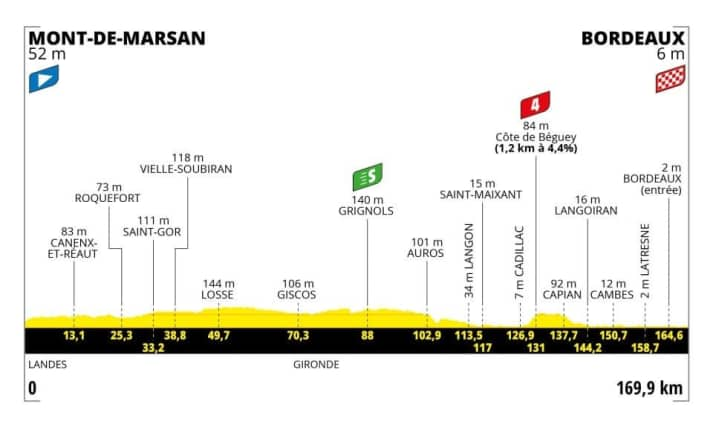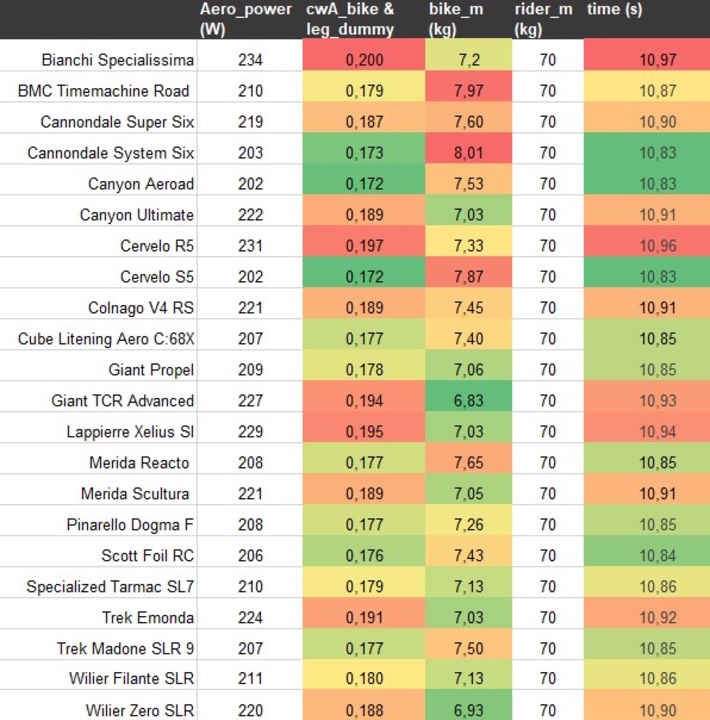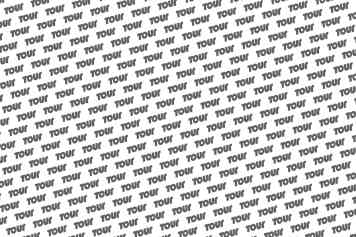
Tour de France 2023 - Stage 7: Mont-de-Marsan - Bordeaux | 169,9 Kilometres

The seventh stage of the 2023 Tour de France has less than 1,000 meters in altitude. It doesn’t get any flatter in this Tour. The finale on the banks of the Garonne in the heart of Bordeaux is also flat. The arrival in Bordeaux is therefore a picture-perfect stage for sprinters. Mark Cavendish was the last to win here in 2010, and if he can do it again, he could take his 35th Tour stage win and become the sole record holder, having already equaled Eddy Merckx’s 34 wins in 2021.
Does Cavendish have the material to realize his potential? His Wilier Filante performed decently in the Tour wind tunnel test. It’s not the very fastest aero bike at 211 watts, but it’s competitive and remarkably light for an aerodynamic bike. That bit less weight is a bonus for an explosive sprinter like Cavendish, because it helps accelerate even faster.
We simulate a 200-meter sprint and set the rider weight at the 70 kilograms Cavendish claims as his race weight. The initial speed is 60 km/h.
Number of the day: 3 hundredths of a second
Mark Cavendish could save three hundredths of a second in the simulated final of the seventh stage of the 2023 Tour de France with the fastest bikes in the field - Cannondale System Six, Canyon Aeroad or Cervelo S5.
That equates to about half a meter in our fast final with a projected 68 km/h final speed.
Whether Mark Cavendish can be stopped by that? Probably not. In case of doubt, he will bend a bit lower over the handlebars and challenge physics with his incomparable body aerodynamics.
The (almost) entire field at a glance

What other factors could influence sprint performance from a material perspective?
The Tires
In our model, we normally use the same tires everywhere. If we change the tire model, there is of course an effect here as well. In the simulated sprint, a 10% faster tire saves about a hundredth of a second. Of course, this immediately raises the question of whether there are tires that roll 10% more easily than others. According to our measurements, we can answer this with a resounding yes. There are even greater differences. However, these are extrapolations. There are no rolling resistance data collected at sprint speeds.
According to TOUR measurements, the fastest road tire at present is the Conti 5000 S TR TT - the tubeless time trial version of the road tire. This tire would even save just under two hundredths in the outlined final compared to other fast road tires. Unlike some other TT tires, the Conti TT- tire is a full race tire with good puncture protection and good grip. Only the tread is thinner and the durability correspondingly lower.
This tire has therefore been spotted many times at this Tour de France, Tadej Pogacar rides on it, for example. Our reporters have even spotted the tire on teams that are not sponsored by Conti. Will Cavendish, whose team rides on Vittoria tires, also use it? We'll be watching closely.
*) The calculations are based on the bikes tested by TOUR in the laboratory and wind tunnel. The bikes at the Tour de France may differ in details. Of course, we have not yet been able to examine last-minute prototypes either.
Our Expert

Robert Kühnen studied mechanical engineering, writes for TOUR about technology and training topics and develops testing methods. Robert has been refining the simulation calculations for years, they are also used by professional teams.
Other Tour de France 2023 Tech-Briefings
